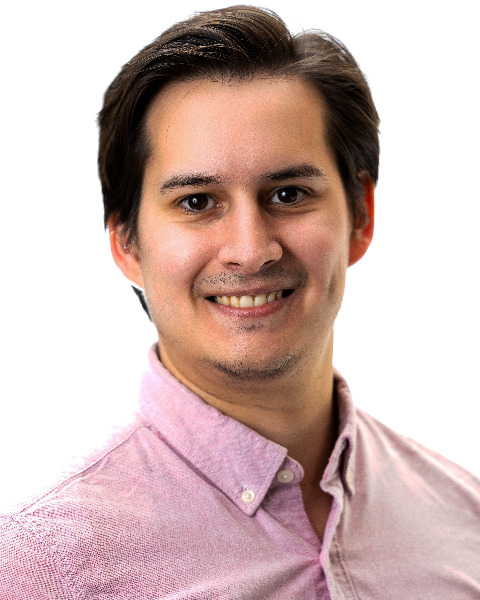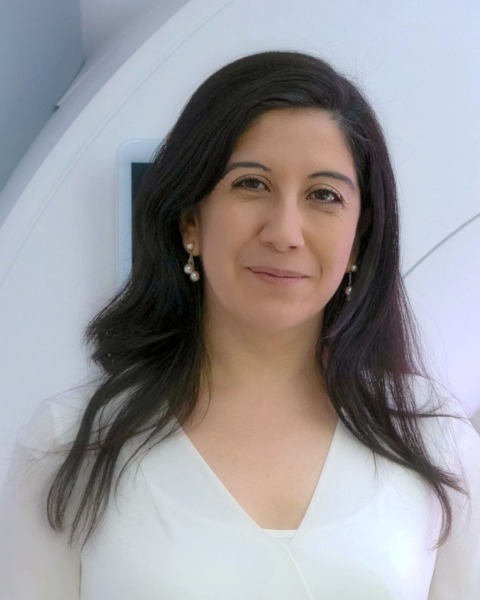Rapid Fire Abstracts
Highly efficient free-running cardiac joint T1/T2 mapping at 0.55 T (RF_TH_188)
- NG
Nicolás Garrido, BEng, BSc
PhD Student
iHEALTH Millenium Institute / Pontificia Universidad Católica de Chile, Chile - NG
Nicolás Garrido, BEng, BSc
PhD Student
iHEALTH Millenium Institute / Pontificia Universidad Católica de Chile, Chile 
Carlos A. Castillo Passi, PhD
Research Engineer
Pontificia Universidad Catolica de Chile, Chile
Claudia Prieto, PhD
Professor and Director for Research and Innovation
School of Engineering, Pontificia Universidad Católica de Chile, Chile
Rene Michael M Botnar, PhD
Director and Professor
Institute for Biological and Medical Engineering
UC Chile, Chile
Presenting Author(s)
Primary Author(s)
Co-Author(s)
Contemporary low-field MRI at 0.55T has been introduced to improve affordability and accessibility of cardiac MRI [1]. T1 and T2 mapping provides insights into fibrosis and inflammation. However, clinical methods require breath-holding, sequential 2D scanning, complex planning and have limited coverage. A recently developed technique at 1.5 T enables efficient, free-breathing 3D joint T1-T2 mapping in a single scan [2]. We propose to adapt this sequence to 0.55T to improve affordability and accessibility. Furthermore, we sought to implement it using Pulseq [3], an open-source sequence definition software, to allow vendor-independent evaluation and reproducibility.
Methods:
The proposed ECG-gated free-running sequence was adapted to work at 0.55T. See Fig. 1 for the full framework diagram. The sequence consists of 3 repeating shots with a continuous acquisition of 156 dual-echo spoiled GRE readouts with a 3D golden-angle radial trajectory. Each shot interval is preceded by an inversion recovery (IR) pulse or IR-T2-preparation (T2-prep) with echo times of 30 and 60 ms for T1 and T2 encoding (Fig. 1a). The shot interval has a length of 2000 ms and the total number of shots was 180. Main acquisition parameters in-vivo were FOV=200×200×200mm3, spatial resolution 2mm3 isotropic, TR = 11.9ms, TE = 2.6/6.47 ms, FA = 8°, acq. time = 6min.
Data is binned based on the time after the R-wave to reconstruct the desired cardiac phase, and into L=36 different T2-prep/IR bins (Fig. 1a). The reconstruction of the L contrasts per shot (temporal resolution = 155ms) was performed using iterative SENSE [4], along with patch-based low-rank regularization (HD-PROST) [5] and dictionary-based low-rank inversion for each cardiac phase (Fig. 1b). Respiratory motion was not addressed in this pilot work.
Water-fat separation is performed using a 2-point Dixon technique [6] (Fig. 1c). Then, a phase-sensitive dictionary matching was performed on the water images with a dictionary generated using Bloch simulations [7] (Fig. 1d).
Results: Phantom results (Fig. 2) show good agreement between the proposed sequence and Spin-Echo reference maps. T1 values show good correlation for the entire range, while a good agreement was found for T2 in the range of interest (under 60 ms).
In-vivo results in short axis views for 10 different slices are shown in Fig. 3 reconstructed at diastole. Average T1/T2 values in a selected slice are 709±71/53±9 ms for systole, and 745±64/56±7 ms for diastole. T1 values are consistent with those reported in the literature (T1=701±24 ms), although overestimated in diastole. The T1 is higher than the literature values for both systole and diastole. Mean values and variance for T2 are consistent with those reported in the literature (58±6 ms) [8]. Remaining blurring is observed in the maps due to the lack of respiratory motion correction.
Conclusion:
In this work, we demonstrate the feasibility of 3D isotropic joint T1 and T2 maps at 0.55T in a single 6-min scan. Future work will focus on incorporating respiratory motion correction to improve image quality and quantification.

